The Dictatorship
What’s at stake as Trump meets Japan’s Takaichi for the 1st time
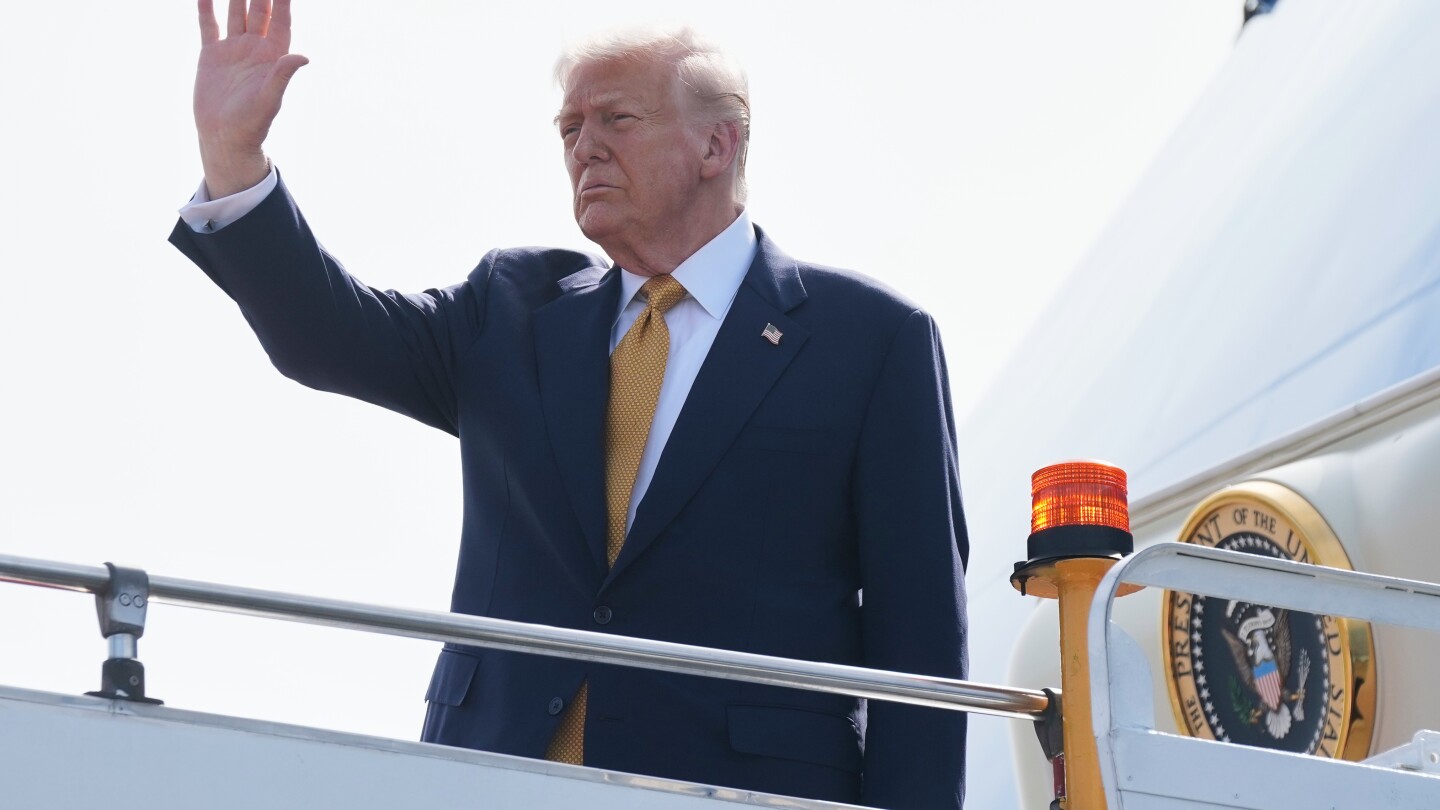
TOKYO (AP) — President Donald Trump opened his visit to Japan on Monday with greetings from the emperor a day before he meets new Prime Minister Sanae Takaichiwho is banking on building a friendly personal relationship with the U.S. leader to ease trade tensions.
One key to this strategy might lie in an idea floated by Japan’s government to buy a fleet of Ford F-150 trucks, a meaningful gesture that may also be impractical given the narrow streets in Tokyo and other Japanese cities.
It’s an early diplomatic test for Takaichi, the first woman to lead Japan. She took office only last week, and has a tenuous coalition backing her.
Trump instantly bought into the idea of Ford trucks as he flew to Asia aboard Air Force One.
“She has good taste,” Trump told reporters. “That’s a hot truck.”
Japanese Emperor Naruhito welcome Trump at the Imperial Palace after the president’s arrival and the two spoke for about 30 minutes. Trump straightened his jacket as he stood next to Naruhito for photos before sat across a round table, with flowers in the middle, for their talks.
“A great man!” he said twice while pointing to the emperor. Trump last saw the emperor in 2019, soon after Naruhito ascended the Chrysanthemum Throne, becoming the first foreign dignitary invited to the palace.
Trump and Takaichi spoke over the phone while the president was mid-flight on Saturday. Takaichi stressed her status as a protege of the late Prime Minister Shinzo Abea favorite of Trump’s from his first term, and said she praised him for brokering the Gaza ceasefire that led to the return of hostages held by Hamas.
“I thought (Trump) is a very cheerful and fun person,” she said. “He well recognizes me and said he remembers me as a politician whom (former) Prime Minister Abe really cared about,” she said. “And I told the president that I extremely look forward to welcoming him in Tokyo.”
Trump spent Sunday in Malaysiawhere he participated in a regional summit, and departed Monday morning for Japan. While on Air Force One on Monday, he said he planned to talk in Tokyo about the “great friendship” between the U.S. and Japan.
Resetting the trade relationship
Beneath the hospitality is the search for a strategy to navigate the increasingly complex trade relationship that Trump shook up earlier this year with tariffs.
Trump wants allies to buy more American goods and also make financial commitments to build factories and energy infrastructure in the U.S.
The meetings in Japan come before Trump’s sit-down with Chinese leader Xi Jinping on Thursday in South Korea.
Both the U.S. and Japan have sought to limit China’s manufacturing ambitions, as the emergence of Chinese electric vehicles, artificial intelligence and advanced computer chips could undermine the American and Japanese economies.
“In light of the planned meeting between Trump and Xi Jinping shortly afterward, Trump may also be considering how he might strengthen his hand by demonstrating the robustness of the U.S.-Japan relationship,” said Kristi Govella, Japan chair at the Center for Strategic and International Studies, a Washington think tank.
Japan’s previous administration agreed in September to invest $550 billion in the U.S., which led Trump to trim a threatened 25% tariff on Japanese goods to 15%. But Japan wants the investments to favor Japanese vendors and contractors.
Japan’s economy and trade minister, Ryosei Akazawahas said his ministry is compiling a list of projects in computer chips and energy to try to meet the investment target.
“As far as I know, I’m hearing that there are a number of Japanese companies that are showing interest,” he told reporters Friday, though he did not give further details.
Ford trucks in Tokyo would be a powerful symbol
Japanese officials are looking at the possibility of buying more American soybeansliquefied natural gas and autos. The U.S.-China trade conflict has shut American soybeans out of the Chinese marketleading China to seek more Brazilian supply. China reported no U.S. soybean imports in September, a first since November 2018.
For Trump, the prospect of Ford trucks in the skyscrapered streets of Tokyo would be a win. The administration has long complained that American vehicles were being shut out of a market that is the home of Toyota, Honda, Nissan, Isuzu, Mitsubishi and Subaru. In a September interview on CNBC, Commerce Secretary Howard Lutnick said Japan wouldn’t buy U.S.-branded vehicles because “Chevys” were popular with Japanese gangsters.
Takaichi may arrange for Ford F-150 trucks to be showcased in a place Trump gets to see them, Japan’s Nikkei newspaper reported. The government is considering importing the trucks for its transport ministry to use for inspecting roads and infrastructure, though there are concerns that the F-150 could cause congestion on narrow Japanese streets.
“We appreciate President Trump’s advocating for American made products,” Ford spokesperson Dave Tovar said. “We would be excited to introduce America’s best-selling truck to work and government customers in Japan.”
Japanese media have reported that Toyota Motor Corp. Chairman Akio Toyoda could announce plans to import his company’s American-made cars back to Japan during a dinner with Trump and other business leaders on Wednesday.
The gestures — combined with Takaichi’s connection to Abe — should help her deal with Trump, who seems predisposed to like her.
“I think she’s going to be great,” Trump said aboard Air Force One. “She’s a great friend of Mr. Abe, who was a great man.”
In 2016, Abe gave Trump a high-end golf club to celebrate his first election, and the leaders bonded over their love of golf. Trump often expresses sadness about Abe’s 2022 assassination.
But there are risks for Takaichi in emphasizing her ties to Abe, said Rintaro Nishimura, who specializes in Japan at the advisory firm The Asia Group.
“Because it’s Takaichi’s first diplomatic engagement I think she wants to start with sort of a bang,” Nishimura said. “Succeeding the Abe-line rhetoric is definitely going to be part of this engagement, although some also suggest that leaning too heavily on the Abe line might not exactly be good for her for creating her own kind of portfolio, her status as Japan’s leader.”
Following his meeting with Takaichi on Tuesday, Trump will give a speech aboard the USS George Washington aircraft carrier anchored in Japan, then hold a dinner with business leaders. Trump plans to leave for South Korea on Wednesday.
But aboard Air Force One on Monday, he told reporters that he was also ready to meet with North Korean leader Kim Jong Un, should that be an option.
“If he wants to meet, I’ll be in South Korea,” Trump said.
___
AP reporter Chris Megerian contributed from Kuala Lumpur, Malaysia.
The Dictatorship
Courts are hampering Trump’s efforts to cancel funding approved by Congress
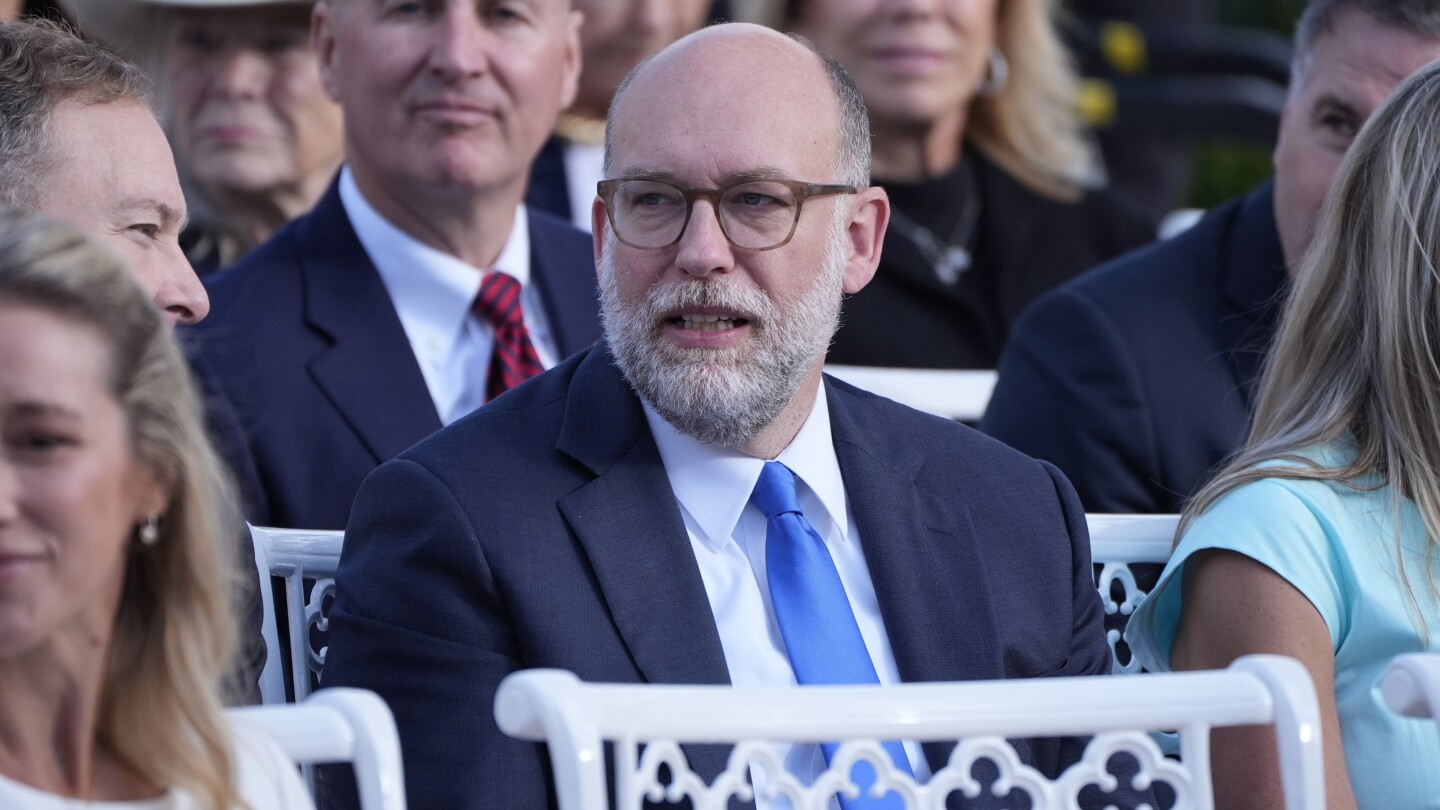
Congress has the constitutional power of the purse, but President Donald Trump’s robust assertion of executive authority is testing even that basic tenet of U.S. democracy.
His administration has already canceled or threatened to cancel billions of dollars of previously approved federal spending and now wants to go after even more funding during the government shutdown.
States, cities, nonprofits and other groups have responded with more than 150 lawsuits accusing the Republican administration of an unlawful power grab.
An Associated Press analysis shows that so far, those suits are mostly succeeding in blocking the Republican president’s spending moves, at least temporarily. But most of the legal battles are far from over, and the Supreme Court, where Trump so far has been more successfulcould have the final word on at least some of them.
The court’s conservative majority has been receptive at least in preliminary rulings to many emergency appeals from the administration. Legal experts say a pair of recent decisions by the court may bode well for the administration’s push to gain more control over government spending. Here’s a look at the current legal score and what could lie ahead:
Courts have mostly ruled against the administration so far
As of early October, court orders were at least temporarily blocking the Trump administration’s decisions in 66 of 152 lawsuits over federal spending, an AP analysis shows. In 37 of those cases, courts had allowed the administration to proceed. In 26 of the cases, a judge had yet to rule on the matter. The remaining 23 had either been dropped or consolidated.
The count reflects decisions by district courts, appeals courts and the U.S. Supreme Court and will almost certainly change as the cases progress.
The flurry of litigation reflects not only the administration’s aggressive effort to wrest control of spending, but the Republican-controlled Congress’ unwillingness to push back, said Zachary Price, a constitutional law professor at the University of California College of the Law, San Francisco.
“Congress seems to be following its partisan interests more than its institutional interests, and that puts a lot of pressure on courts,” he said.
It’s hard to say how much money the administration has withheld
Government watchdogs say the administration is blatantly ignoring a requirement in the 1974 Impoundment Control Act to report funding freezes to Congress.
Research by Democrats on the House and Senate Appropriations Committees estimated the administration was freezing, canceling or seeking to block a total of $410 billion as of early September. That’s equivalent to about 6% of the federal budget for the year that ended on Sept. 30.
The administration has disputed that number.
Since the shutdown started this month, the administration has targeted even more fundingprimarily in places represented by Democrats.
The Trump administration is taking a page from Nixon
Legal scholars say no president has attempted massive, unilateral cuts like these since Richard Nixon. The moves reflect an expansive view of executive power that is at odds with the Impoundment Control Act, court rulings and the Constitution, which grants Congress supremacy over spending, experts say.
“The power they’ve claimed is the power to delay and withhold funds throughout the year without input from Congress,” said Cerin Lindgrensavage, counsel with Protect Democracy, which is involved in multiple lawsuits against the administration. “That’s a theft of Congress’ power of the purse.”
In a message to Congress earlier this year, the White House said it was “committed to getting America’s fiscal house in order by cutting government spending that is woke, weaponized, and wasteful.”
White House budget director Russ Vought, a proponent of withholding federal funds, has argued presidents long had the power to spend less money than Congress appropriated if they could cut waste or be more efficient, and that power is needed to address the country’s massive debt.
The government shutdown opened up a new opportunity to cut spending, he said this month on “The Charlie Kirk Show.”
“If I can only work on saving money, then I’m going to do everything I can to look for opportunities to downsize in areas where this administration has thought, ‘This is our way towards a balanced budget.’”
The administration has cut entire agencies
The 152 cases the AP identified challenge the closure of government agencies and offices, the cancellation of grants and other assistance and the attachment of new conditions on federal funding.
The administration has used the cuts, or threat of cuts, to try to impose its policies on gender, raceimmigration and other issues.
But it’s not just money on the line. The funds supported jobs, school lunches, health programs, scientific research, infrastructure projects, foreign assistance, disaster preparedness, education initiatives and other programs.
Some notable rulings against the administration include the restoration of funding to 14 states that filed suit over nearly $2 billion withheld for electric car chargers and a block on potentially broad funding cuts to some of the country’s largest cities over their “sanctuary” immigration policies.
Judges have raised constitutional concerns
Judges who have ruled against the administration have often found strong reason to conclude the cuts, or threat of cuts, would violate the Constitution’s separation of powers by usurping Congress’ authority over spending.
They have also ruled the moves were most likely arbitrary under the Administrative Procedure Act, a law that governs the process by which federal agencies develop and issue regulations.
Judges who have sided with the administration have likened at least some of the legal claims before them to contract disputes that belong in a different court: the U.S. Court of Federal Claims.
That court, which traces its origins to the mid-1800s, handles lawsuits by citizens seeking money from the federal government. Referred to as “the People’s Court,” it is separate from the district courts that are handling most of the high-profile litigation against the administration.
The Supreme Court has often sided with the White House
The high court’s conservative justices have allowed the administration to move ahead for now with plans to shutter the Education Department, freeze $5 billion in foreign aid and cut hundreds of millions of dollars for teacher training and research supported by the National Institutes of Health.
Those decisions may make it harder to challenge the administration’s spending cuts, though the high court has not yet considered their ultimate legality or overturned lower court rulings.
In the National Institutes of Health case, the high court ruled 5-4 in August that lawsuits over the cancellation of grant funding generally cannot be handled entirely by federal district courts. Instead, plaintiffs must sue in federal claims court for any money and turn to the district courts if they want to challenge the guidance that led to the grant terminations.
The impact of the Supreme Court’s decision is still unfolding, but it could force plaintiffs in the grant funding cases to start over in a new courtroom. In some cases, plaintiffs might have to decide if they want to sue on two fronts.
In the foreign aid case, the Supreme Court in a 6-3 decision in September suggested the Impoundment Control Act did not give private parties the right to sue over so-called pocket rescissions.
That’s when the president submits a request to Congress not to spend approved money, but does it so late in the fiscal year that Congress doesn’t have time to act and the funds go unspent.
Trump notified House Speaker Mike Johnson in August of a pocket rescission for the $5 billion in congressionally approved foreign aideffectively cutting the budget without going through the legislative branch.
Though the Supreme Court stressed its decision was preliminary, legal experts say it could make it easier for the Trump administration to use the tactic again.
___
Associated Press writer Lindsay Whitehurst contributed to this report.
The Dictatorship
‘Deeply disturbing portrait of America’: Nicolle Wallace rips GOP over looming SNAP cutoff
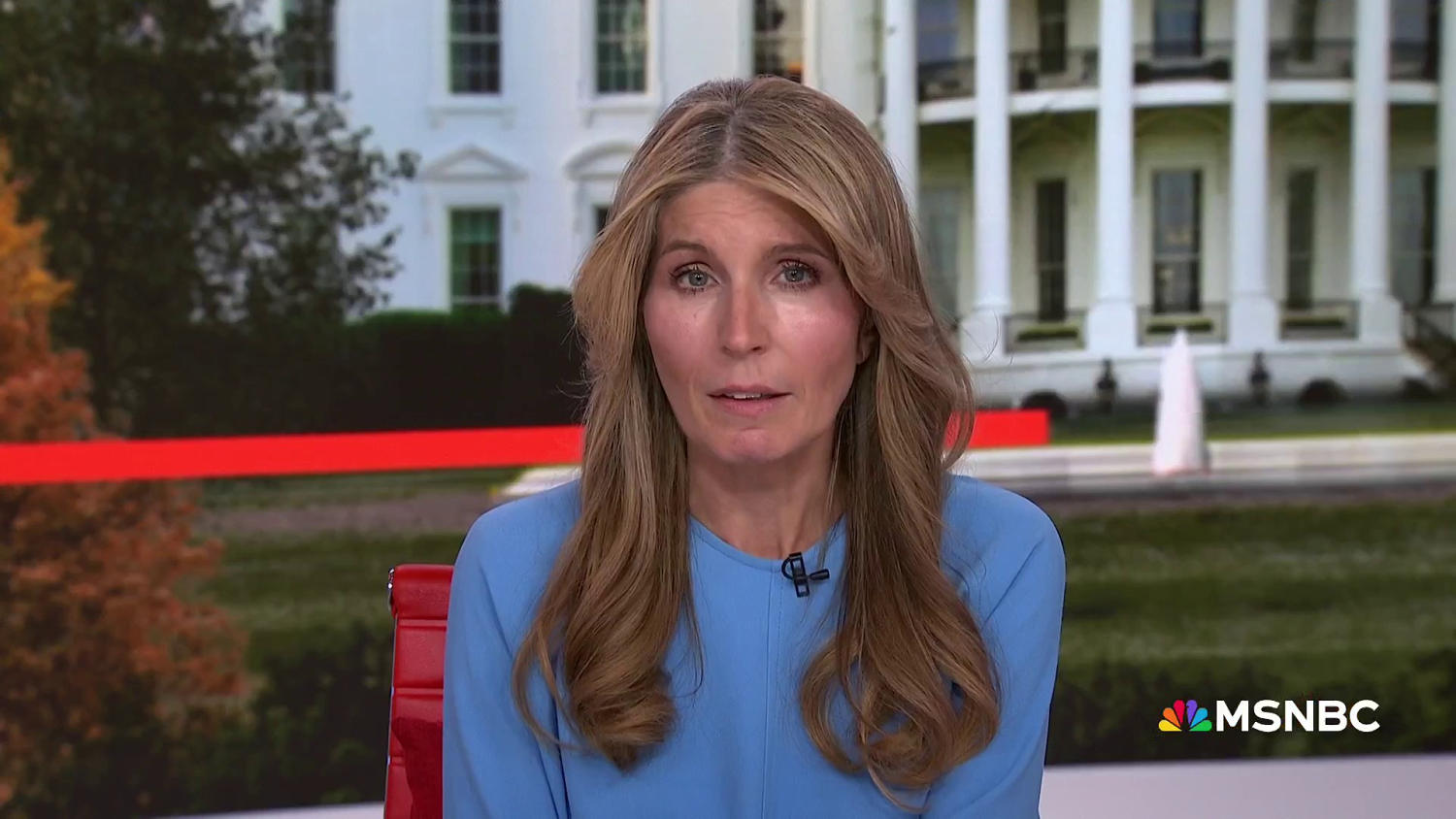
Come Saturday, the 42 million Americans who depend on the Supplemental Nutrition Assistance Program, or SNAP, will be forced to go without benefits due to the ongoing government shutdown.
On Monday’s “Deadline: White House,” Nicolle Wallace placed the blame for the looming lapse entirely on the president and the Republican Party. “It is awful when anyone in America goes hungry, and it is a choice,” she said, “it’s Donald Trump’s choice.”
The BLN host noted this isn’t the first time the administration has slashed food assistance for some of America’s most vulnerable. In March, it cut approximately $500 million in aid for food banks.
“That $300 million that Donald Trump is spending on making a gold ballroom where the East Wing once stood, and the $230 million he’s trying to get us, the American taxpayers, to reimburse him for being under criminal investigation, they add up to roughly the same amount of money he has cut from America’s food banks,” Wallace said.
The BLN host called the split-screen of Trump’s White House renovations and the impending cuts “a deeply disturbing portrait of America,” adding, “the images of Donald Trump destroying —with an actual wrecking ball — the actual East Wing of the White House, while Americans are about to go without food stamps, is a snapshot of America that will live forever.”
Wallace also called out the president for pushing “policies that will hurt the parts of the coalition he used to publicly speak out for.”
“Food insecurity in America is a lot more common than anybody can imagine, and it knows no party affiliation,” she explained. “It does not care who you voted for, and the fact that Trump and all the Republicans in Congress are opting into this tragedy, this sort of shameful thing in America in 2025, should be front-page news all over the place.”
You can watch Wallace’s full analysis in the clip at the top of the page.
The Dictatorship
Lawmakers see the pain of the shutdown — and are digging in even harder
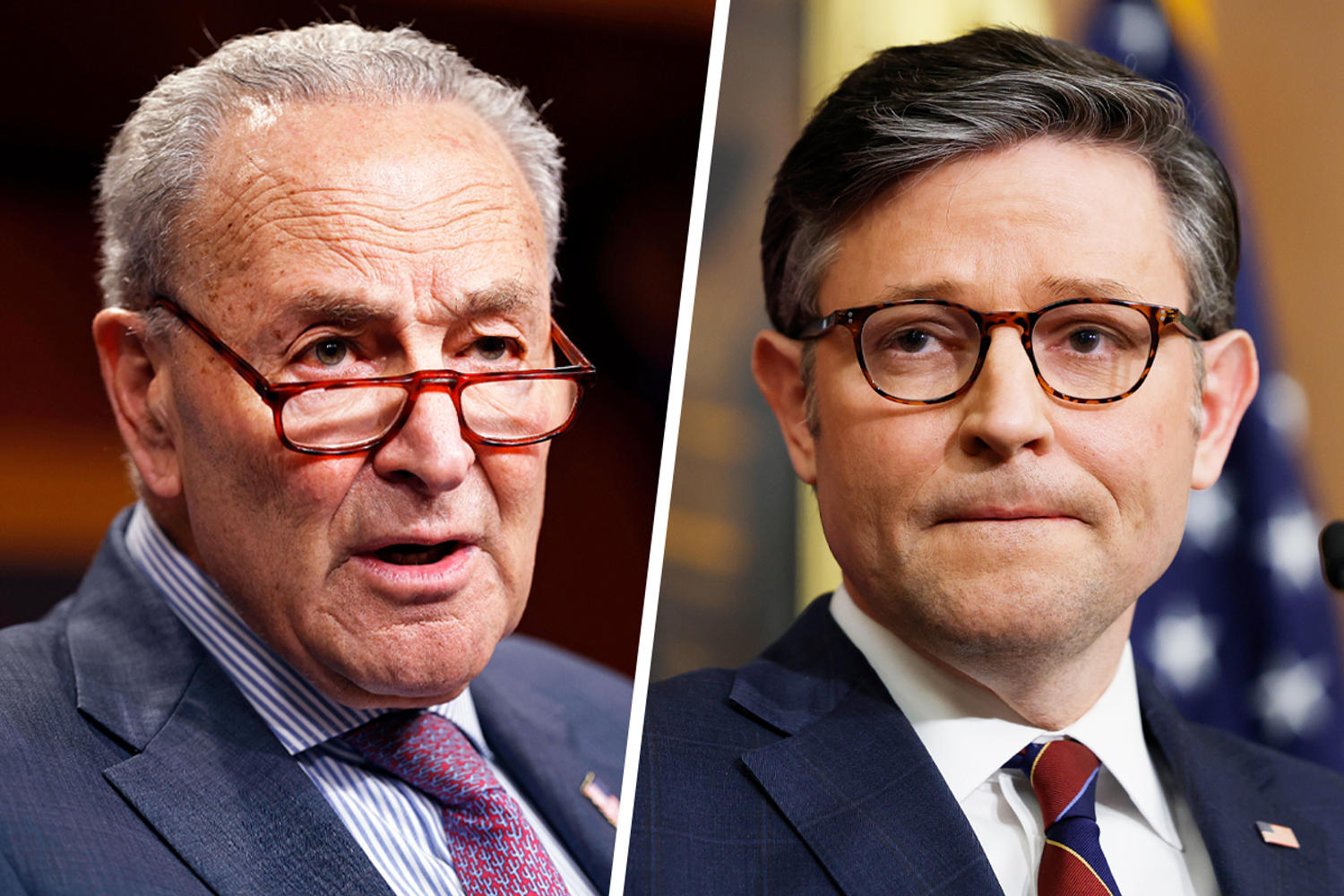
As the government shutdown reaches the monthlong milestone, both parties agree on two things: The pain is mounting, and that the other party should give in.
Republicans and Democrats widely acknowledge how the shutdown is hurting Americans. They see food benefits running outmore missed paychecks on the horizon and the prospect of low-income pregnant women, infants and children in the WIC assistance program not receiving aid.
But, thus far, the general reaction from lawmakers in both parties has been to argue that this latest pain point is just evidence that the other side needs to succumb to the demands of their party.
Republicans say the quickest way to address the escalating pain is to pass the GOP’s short-term spending bill that the House approved last month, which most Senate Democrats have shot down 13 times.
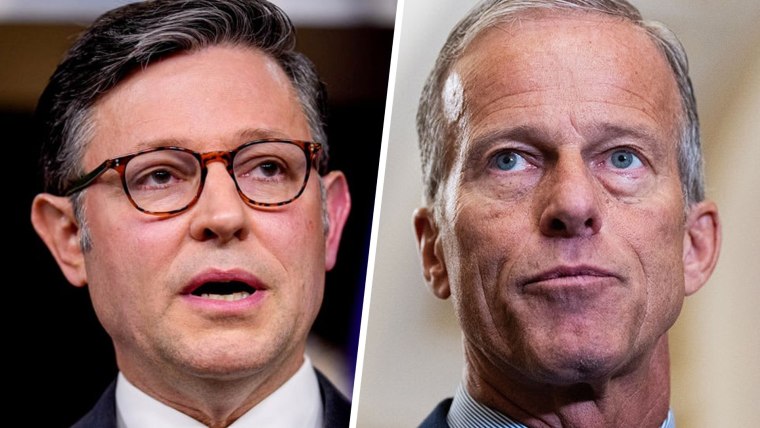
Ask a GOP lawmaker about, say, the approaching cliff for the Supplemental Nutrition Assistance Program, and they’ll agree it’s a major problem.
“It’s a serious issue, that’s 40 million Americans,” Sen. James Lankford, R-Okla., said. “It affects a lot of people, and my desire is to have this settled a month ago.”
But ask Lankford whether that SNAP cliff is affecting his thinking, and he’ll suggest “the only way” to fix the problem is for Democrats to support the Republican-continuing resolution.
“It’s the only vehicle that’s ready right now,” Lankford said.
Democrats say that proposal is a nonstarter — not because they disagree with anything in the bill, but because they want a fix to expiring Obamacare tax credits included in the legislation. Not extending those subsidies, Democrats warn, will cause health-care premiums to skyrocket for millions of Americans.
Every day that they get closer to the next pain point is to their disadvantage, and frankly, I think it exposes them to the wrath of what they consider to be their own base.”
Sen. Kevin Cramer, R-N.D.
But ask a Republican such as Sen. Kevin Cramer, R-N.D., whether open enrollment starting on Nov. 1 is an incentive for Republicans to start negotiating with Democrats, and he’ll tell you that it’s actually “a lot of incentive for Democrats to finally come to their senses and reopen the government so we can have that discussion.”
“Every day that they get closer to the next pain point is to their disadvantage, and frankly, I think it exposes them to the wrath of what they consider to be their own base,” Cramer said.
Democrats, of course, see it the other way. Senate Minority Leader Chuck Schumer, D-N.Y., said Tuesday afternoon he believes there will be “increased pressure” on Republicans to negotiate with Democrats once open enrollment begins.
But so far, that hasn’t happened — and the belief that President Donald Trump will come to the table once he sees the scope of the rising premiums may not bear out.
Democrats do, however, agree that the SNAP cliff is a big problem. From their perspective, that’s just all the more reason Republicans should work out a broader deal, with some Democrats taking offense to the suggestion that Republicans suddenly care more about food benefits than their party.
“This is the same party that cut billions of dollars from SNAP benefits in order to fund tax cuts for the ultra-wealthy,” Sen. Ruben Gallego, D-Ariz., told BLN, referring to the GOP reconciliation bill over the summer. “Now they are suddenly the protectors of people on SNAP benefits? It’s all BS.”
Gallego noted that, even if Congress approves funding, GOP lawmakers could claw the dollars back through rescissions — something Republicans have already done this year.
“I don’t trust them,” Gallego said.
Sen. Jeanne Shaheen, D-N.H., a moderate Democrat who broke with the majority of her party in March to support a GOP funding bill, agreed that Congress has to address SNAP running out of money. But she suggested that it shouldn’t come in lieu of Congress addressing the expiring Obamacare tax credits.
“We gotta be able to provide the SNAP benefits that people are entitled to, and the premium tax credits that will make health insurance affordable, and keep the government open,” Shaheen said.

The hardening of positions comes as the shutdown is on the brink of its fifth week, inching closer to breaking the current record for the longest shutdown in history: the 35-day lapse in funding of 2018-19.
During previous shutdowns, mounting pain was a key part of solving the impasses. The 2013 shutdown ended, in large part, because the U.S. was about to reach the debt limitand a major reason the 2018-19 shutdown ended was because air traffic controllers stayed home and grounded flights. But this time around, lawmakers are looking at the pain and suggesting it’s a key reason why the other side should relent.
There is hardly any inward reflection — and neither side is seeing much political blowback, with Americans narrowly blaming Republicans more than Democrats for the shutdown in polls.
“I believe both sides think they’re either winning or they’re not losing, and that’s not fertile ground for any change,” said Sen. Thom Tillis, R-N.C. “For another week or two.”
For a potentially record-breaking shutdown, the standoff has been marked by how little Republicans and Democrats are talking. The GOP position, in fact, is that they have nothing to discuss. Republicans say they will only talk about those expiring subsidies once the government is reopened. Democrats say that will leave Americans making health-care decisions with incomplete information.
Democrats think Americans should know what they’ll be paying for Obamacare before they’re forced to make those decisions during open enrollment, and they refuse to accept on blind faith that Republicans will extend subsidies in some form.
With those positions established — for Republicans, that there is nothing to discuss, and for Democrats, that the GOP has to come to the table — there’s been very little movement over the past month.
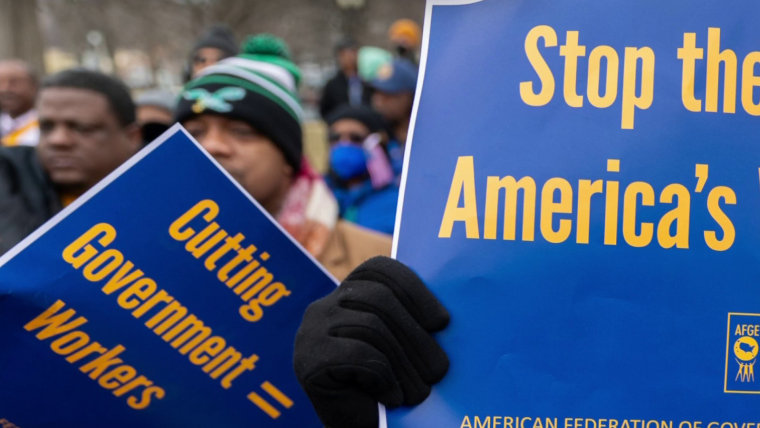
Even a statement from the American Federation of Government Employees, the largest union representing federal workers that has traditionally supported Democrats, did little to change the dynamic this week — even as AFGE called on Democrats to pass the Republican spending bill and stop “punishing the people who keep our nation running.”
Most Democrats were simply incredulous about the statement.
Sen. Tim Kaine, D-Va., noted that he works very closely with that union. “The AFGE would not want us to cut a deal and then have Trump fire a bunch of people next week,” Kaine said. “If we cut a deal and then he did that, they would come to us and say, ‘What the hell were you guys thinking?’”
When reporters asked Sen. Gary Peters, D-Mich., about the AFGE statement on Monday, he reiterated the general Democratic position: “I don’t like shutdowns.”
“I think we should never have a shutdown,” Peters said. “That’s why I hope Republicans would come with us and find common ground.”
When known asked Peters whether he agreed with AFGE’s position that the GOP funding bill should pass, he made it clear that Democrats still wanted a resolution on the Obamacare subsidies. “So I’m going to do that,” he said.
And then he succinctly summed up how lawmakers — and outside groups — seem to be talking past one another.
“I agree, we don’t want a shutdown,” Peters said. “We want to end the shutdown as quickly as possible, I totally agree with that.”
She covers Capitol Hill involving both Democrats and Republicans. She previously covered Congress at Blue Light News. She graduated from George Washington University’s School of Media and Public Affairs with a bachelor’s degree in journalism and mass communication and political science. She is a native New Yorker, Billy Joel’s No. 1fan and a Rubik’s Cube aficionado.
-
Uncategorized12 months ago
Bob Good to step down as Freedom Caucus chair this week
-
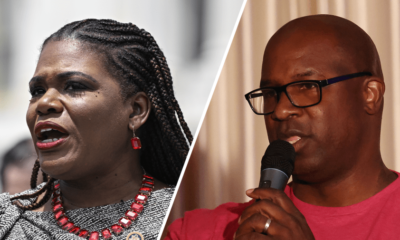
 Politics8 months ago
Politics8 months agoFormer ‘Squad’ members launching ‘Bowman and Bush’ YouTube show
-

 The Josh Fourrier Show12 months ago
The Josh Fourrier Show12 months agoDOOMSDAY: Trump won, now what?
-

 The Dictatorship8 months ago
The Dictatorship8 months agoPete Hegseth’s tenure at the Pentagon goes from bad to worse
-
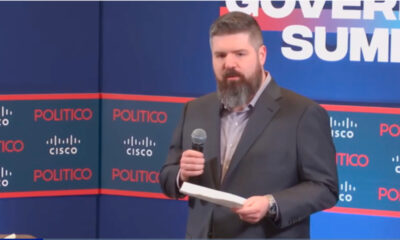
 Politics8 months ago
Politics8 months agoBlue Light News’s Editorial Director Ryan Hutchins speaks at Blue Light News’s 2025 Governors Summit
-

 The Dictatorship9 months ago
The Dictatorship9 months agoLuigi Mangione acknowledges public support in first official statement since arrest
-
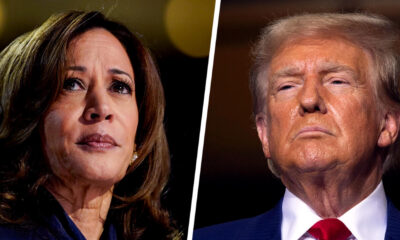
 Politics12 months ago
Politics12 months agoWhat 7 political experts will be watching at Tuesday’s debate
-

 Politics8 months ago
Politics8 months agoFormer Kentucky AG Daniel Cameron launches Senate bid





